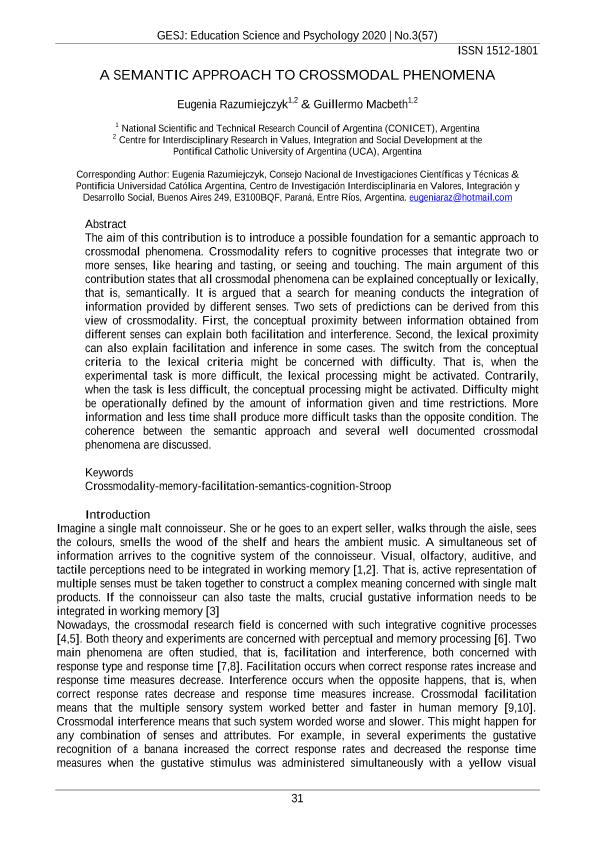Artículo
A semantic approach to crossmodal phenomena
Fecha de publicación:
12/2020
Editorial:
Georgian Technical University
Revista:
Education Sciences and Psyhology
ISSN:
1512-1801
Idioma:
Inglés
Tipo de recurso:
Artículo publicado
Clasificación temática:
Resumen
The aim of this contribution is to introduce a possible foundation for a semantic approach to crossmodal phenomena. Crossmodality refers to cognitive processes that integrate two or more senses, like hearing and tasting, or seeing and touching. The main argument of this contribution states that all crossmodal phenomena can be explained conceptually or lexically, that is, semantically. It is argued that a search for meaning conducts the integration of information provided by different senses. Two sets of predictions can be derived from this view of crossmodality. First, the conceptual proximity between information obtained from different senses can explain both facilitation and interference. Second, the lexical proximity can also explain facilitation and inference in some cases. The switch from the conceptual criteria to the lexical criteria might be concerned with difficulty. That is, when the experimental task is more difficult, the lexical processing might be activated. Contrarily, when the task is less difficult, the conceptual processing might be activated. Difficulty might be operationally defined by the amount of information given and time restrictions. More information and less time shall produce more difficult tasks than the opposite condition. The coherence between the semantic approach and several well documented crossmodal phenomena are discussed.
Palabras clave:
MEMORY
,
CROSSMODALITY
,
FACILITATION
,
STROOP
,
SEMANTIC
,
COGNITION
Archivos asociados
Licencia
Identificadores
Colecciones
Articulos(SEDE CENTRAL)
Articulos de SEDE CENTRAL
Articulos de SEDE CENTRAL
Citación
Razumiejczyk, Eugenia; Macbeth, Guillermo Eduardo; A semantic approach to crossmodal phenomena; Georgian Technical University; Education Sciences and Psyhology; 57; 3; 12-2020; 31-36
Compartir




